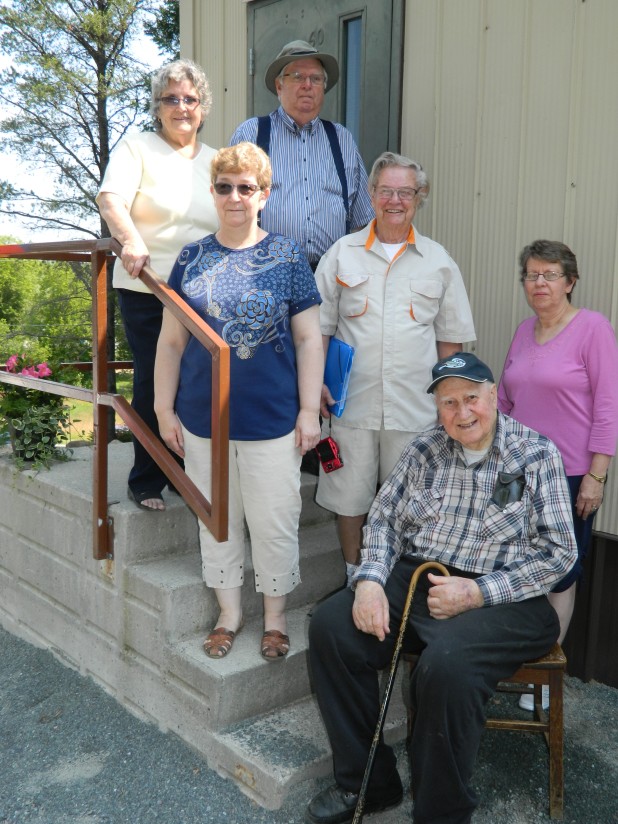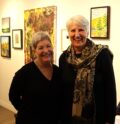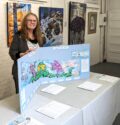Archive » General News » News
Wollaston Heritage opens new displays
July 15, 2015

By Jim Eadie
A group of devoted Wollaston Township residents and supporters is one step closer to their ambitious goal of a multi-million dollar heritage attraction this past weekend with the opening of the new museum building in the hamlet.
Wollaston Heritage is a charitable organization that has been working towards this day since 2007, when its original membership set about to develop a centre based around the property that at one time was the location of the Coe Hill iron mine.
On Saturday, July 11, members, supporters and the curious were treated to the new displays of historical artifacts which included local photographs, books, school, church and household items from the municipalities past, as well as farming tools, railroad and mining artifacts.
Coe Hill was established in the 1880’s as a mining and farming community around the high hopes of William Coe and iron ore deposits he was developing there.Eventually the Central Ontario Railroad reached Coe Hill from Trenton to transport the ore south to market. Unfortunately the ore was found to contain too much sulphur for profitable processing, and very abruptly the mining operations collapsed. The hamlet slowly and painfully shifted to lumbering for economic development. Wollaston Heritage plans to develop the old mine site into a significant tourist attraction for the area over the next few years.
The new museum building is located on Centre St. just north of Hwy 620 behind the Coe Hill LCBO. For the summer it will be open for visitors every Saturday and Sunday between 10 a.m. and 4 p.m..
Local retired farmer, politician and community volunteer Albert Vader was on the original committee formed, and was pleased to see the new museum open.
“It is important,” he said. “I notice that young people are interested in how things were done in the past, and the older folks will come out to remember.”
Edith and Dan McCaw, who continue to be a major driving force behind the project, donated the original mine site property several years ago to Wollaston Heritage.
“I’m just the yard guy,” said McCaw, downplaying his role in the project. “You know … do this, do that, cut this, go get that!”
McCaw has collected a large amount of mining equipment including a headframe, small rail line with ore cars, and drilling equipment which he plans to have set up on the original mine shaft located nearby on the museum property. Also in the plans are an antique saw mill, reconstruction of an old barn, and a “stickwall” building to house a main street display set up with small businesses in times past, similar to the Farm Town heritage centre in Stirling, Ontario.
“We have 3 steam engines,” said McCaw, “one was owned by grandpa Bob McCaw for his sawmill .. it had a boiler rating of 20 horsepower.” McCaw recalls as a young man firing the boiler at the mill.
“We would like to see our membership increase,” he said. “Memberships provide a little steady income, and a little extra help. Currently McCaw noted that there are about 20 volunteers working on the museum project.
“We had a really great opening day,” said Edith McCaw. “People seemed to come all day, a few at a time, and it was really nice.”
Edith McCaw does more than just care for collections and directs the cataloguing of artifacts, documents and photographs. Her persistent local research has resulted in the publication of three books by Wollaston Heritage:
1. Memories of the Lives of our Pioneers, Wollaston Twp. and Surrounding Areas
2. Memories – More from our Past
3. Memories of our Military Men and Women
“One thing I learned as a past district director of fall fairs,” said Albert Vader, “is to get something small like this going … and then people will come along when they see you doing something.”
Good advice, and it looks like that is exactly what is happening.

















